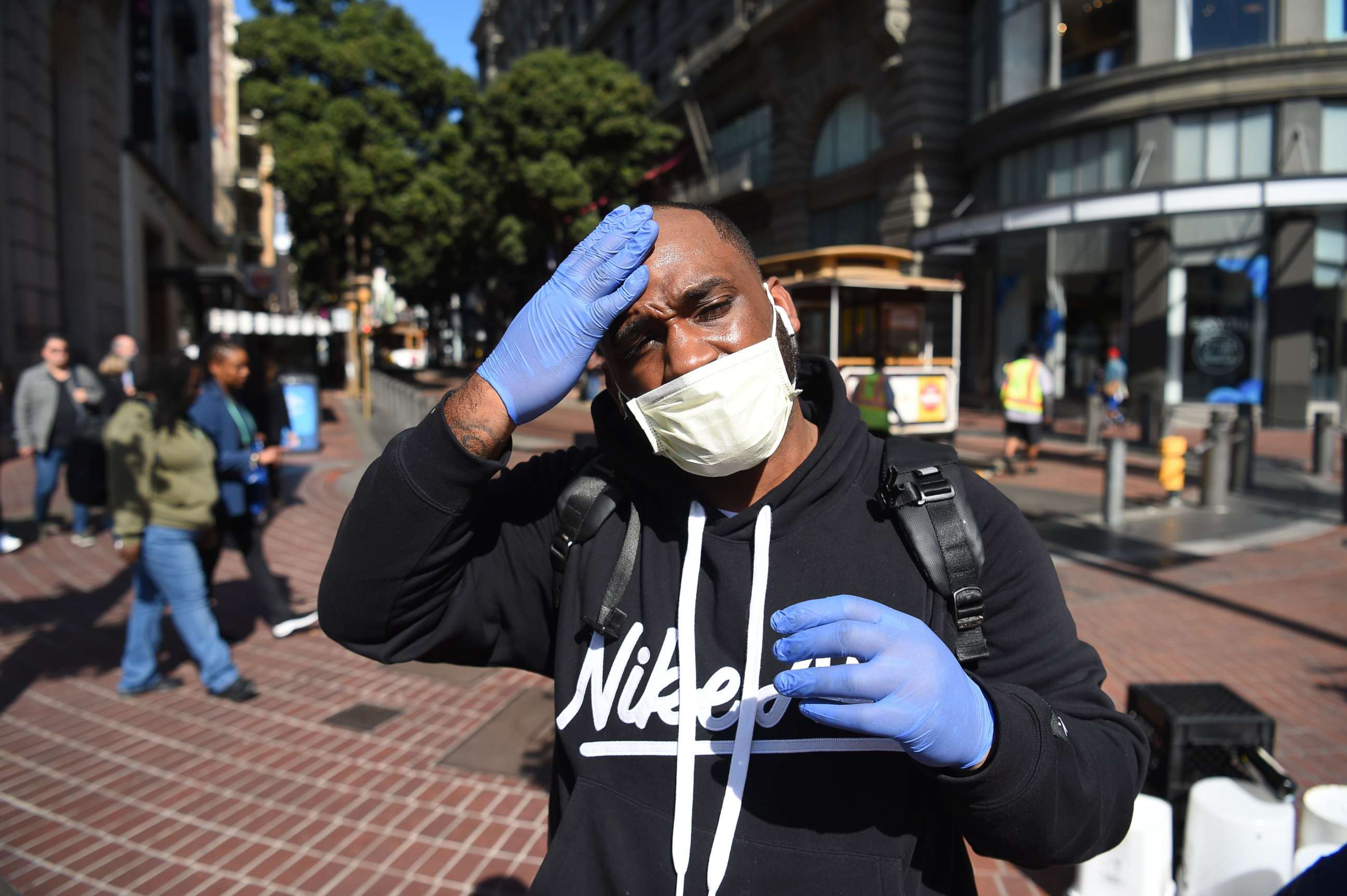Self-quarantine may provide option to slow spread of coronavirus
The CDC is warning Americans to prepare for the spread of the disease.
Some people show up to work no matter what -- snow, hail, sleet or illness. But muscling through is not always the best choice when sick. People are commonly told to stay home when they're sick to avoid spreading their germs.
The thought process with self-isolation or self-quarantine with the new coronavirus is similar.
"With the expectation that there will be community spread within the U.S., we need to make preparations to mitigate the spread of the virus," said Dr. Robert Glatter, emergency physician at Lenox Hill Hospital in New York City.
COVID-19, the disease caused by the new coronavirus, is a respiratory illness that is spread primarily from person to person by people who are in close contact with one another (about 6 feet).
When an infected person sneezes or coughs, the respiratory droplets produced can land in the mouths or noses of people nearby. These droplets can then be inhaled and cause infection. Public health officials are still learning about how this novel coronavirus spreads, but they think it might be possible to contract COVID-19 by touching a surface with the virus, and then touching the face. The fact that the virus is so easily transmitted among people in close contact makes self-isolation a very important and effective measure to combat its spread.
But how is self-quarantine different from self-isolation?
"Quarantine separates and restricts the movement of well individuals who have been exposed to an infectious disease," whereas self-isolation, "separates ill persons and restricts their movements until they are no longer contagious," said Dr. Bruce Ribner, medical director at Emory University Hospital's Serious Communicable Disease Unit. In both instances, the idea is to stop the spread of the infectious disease.
Self-isolation is something many people already do on their own.
"An example of self-isolation can be when you get the flu, you call out of work," said Dr. Eric Cioe-Peña, director of Global Health for Northwell Health, in New Hyde Park, New York.
"People who are infected with a contagious disease should always avoid contact with others if at all possible," Ribner said. Cioe-Peña added, "When you get sick, please don't go the ER and sit in the waiting room for 7 hours. Don't get healthy people sick."

"In the event of a possible exposure to COVID-19, it's vital to impose a self-quarantine at home for the duration of the incubation period," currently believed to be 14 days, Glatter said. He said people who feel sick should stay home, closely monitor symptoms and take their temperature twice a day. If people develop new symptoms or a high fever, they should alert their healthcare providers.
"If you are coughing or have a fever, wearing a mask at home will serve as added protection for persons who may live with you at home," he said. "It's also vital to wash your hands frequently to reduce the chance of transmission of the virus. This is the single most important way to protect yourself and others you may live with."
The CDC recommends consulting with local health departments and health care professions to assess several factors when engaging in self-isolation:
-Make sure the sick person is stable enough to stay at home
-Ensure an appropriate caregiver is available to stay with the sick person at home.
-It's best if the sick person has a separate bedroom to recover, without sharing close space with others.
-Make sure the sick person has access to food, water and other necessities.
-Keep in mind that adults over 65, young children, pregnant women and people with compromised immune systems from autoimmune diseases or chronic heart, lung or kidney conditions are at increased risk of complications from the coronavirus.
"The majority of people who get it COVID-19 will be fine," Cioe-Peña said.
"People are more likely to identify as sick if they are allowed to stay home," he said. "They are less likely to report they are sick if they know they are going to be taken to some isolation unit."
Asking people to self-quarantine is a more effective public health approach than other types of quarantines, like mandatory ones.
As cases of COVID-19 are likely to increase, everyone can do their part to help stop the spread of this outbreak.
"Self-isolation and self-quarantine work only as well as the individual's willingness to protect others," Ribner said.
Angela N. Baldwin, M.D., M.P.H., is a pathology resident at Montefiore Health System in the Bronx and is a contributor to the ABC News Medical Unit.
Sony Salzman is a science and medical journalist based in Brooklyn.




